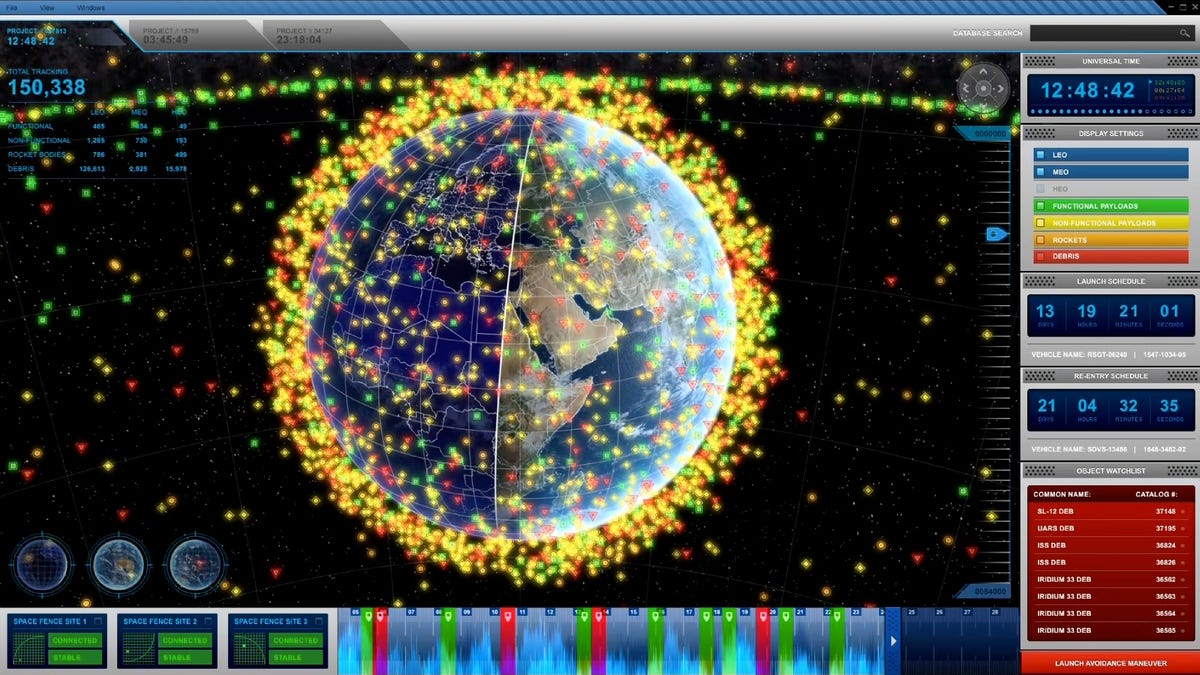Lockheed touts progress on Space Fence
The Air Force wants to replace its aging Space Surveillance System to keep tabs on the threat posed by orbital space junk. Lockheed Martin has a radar prototype.
Earth's orbit is a very cluttered place. And that makes it dangerous.
The U.S. Air Force is looking to get a better handle on that clutter--from functioning satellites to abandoned rockets and shards of machinery--with something it calls the Space Fence. This isn't a barrier to keep the bric-a-brac at bay, but rather a radar-meets-catalog initiative to keep track of what's where.
Today, Lockheed Martin said it's taken a key step forward with its prototype of a ground-based radar system for the $3.5 billion Air Force Space Fence program: that prototype is now tracking objects in orbit.
Lockheed says that its system design incorporates a scalable, solid-state S-band radar, whose higher wavelength frequency can detect much smaller objects than the existing, 50-year-old Air Force Space Surveillance System (also known as the VHF Fence). The goal is for the new system to provide greater accuracy, more thorough coverage, and more timely information.
"The successful detection and tracking of resident space objects are important steps in demonstrating technology maturity, cost certainty and low program risk," said Steve Bruce, vice president of the Space Fence program at Lockheed, in a statement. "Space Fence will detect, track and catalog over 200,000 orbiting objects and help transform space situational awareness from being reactive to predictive."
The Air Force says that about 95 percent of space objects are orbital debris, not functional satellites.
All that clutter poses a threat to communications and GPS satellites, the International Space Station, and spacecraft like the Air Force's own mystery flyer, the X-37B, still aloft on its second secretive mission. That danger isn't theoretical. In 2010, the ISS had to dodge an old NASA research satellite and in 2009, an Iridium satellite collided with a Russian Cosmos satellite in a 15,000-mph crash that spewed an estimated 800 pieces of debris.
Lockheed developed the prototype under a $107 million contract awarded by the Air Force in January 2011.
Looking beyond the prototype itself, Bruce said in the Lockheed statement, "our net-centric design approach allows Space Fence to be easily integrated into the broader U.S. Space Surveillance Network of sensors already operated by the Air Force."
The Air Force expects to award a Space Fence production contract this year, and has a goal of getting the first Space Fence sites operational later in the decade.
Once all the space junk is cataloged, then all we'll need is a "janitor satellite" or a big ol' laser to nudge it out of the way.


